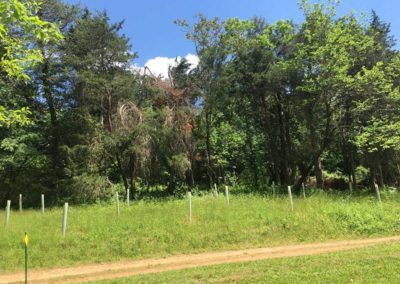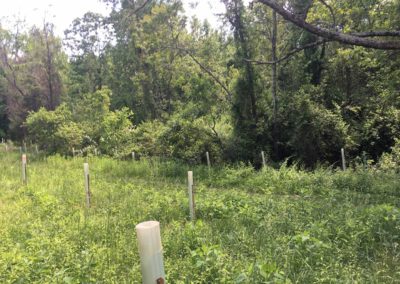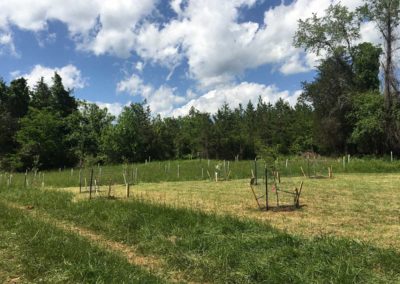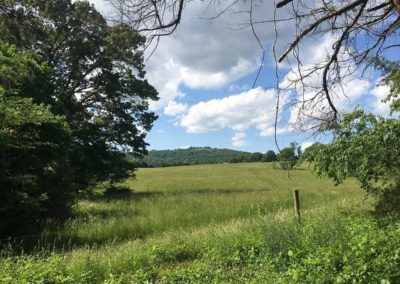Success Stories
James Monroe’s Highland

Problem:
Invasive vines, shrubs, and trees were choking out native plants and impeding enjoyment of the trails.
Solution:
To establish a healthy native-species riparian buffer by clearing out invasive plants and introducing native trees and shrubs to the area.
Outcome:
Public access to beautiful winding trails through a healthy native buffer, as well as a Tree Library of some of Virginia’s finest native tree species.
Highland is more than an archeological and historical destination. It includes working land and over six miles of recreational trails that are open to the public, and it strives to be a good steward to this land. In the fall of 2020 Highland, along with several partners, embarked on a buffer project to repair a segment of its riparian areas.
The Highland Riparian Buffer Project benefits Massey Creek, which winds through the Highland landscape, and has downstream effects on the James River and the Chesapeake Bay. Highland’s partners included the Virginia Department of Forestry, the Rivanna Conservation Alliance, and the James River Association, as well as many volunteers.
The project continues today. The buffer zone is visible from the Highland trails and includes a tree library with QR codes that show examples of each tree used in the riparian forest project. Species planted include black willow, persimmon, red maple, poplar, mocernut hickory, silky dogwood, north red oak, black gum, sycamore, hackberry and American wild plum.
“The riparian buffer project with the James River Consortium addresses the environmental impact of historical land use at Highland, which is important for our visitors to learn about,” said Sara Bon-Harper, PhD, Executive Director of James Monroe’s Highland.
Learn more about the Highland Riparian Buffer Project »
Conservation needs result from centuries of agricultural practices and are as much a part of the history of Central Virginia as are political and social history. ~ Sara Bon-Harper, PhD

About the Project
Location: Albemarle, Virginia
Year Installed: 2020 and ongoing
Land Type: Agricultural
Acres of Riparian Forest Buffer: 6.72
Trees Planted: 1999
Improvements: Cattle fencing, invasives removal and mulching, streamwater testing, planting, maintenance and mowing
Programs Used: James River Buffer Program
Key Partners: Highland, Dept of Forestry, Rivanna Conservation Alliance, James River Association
Grant: Virginia Environmental Endowment
Installed by: Conservation Services, Agricultural Solutions of Albemarle








